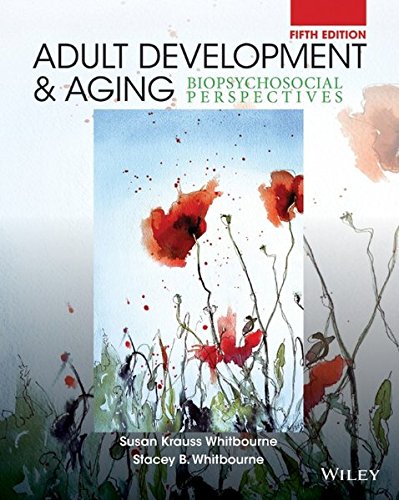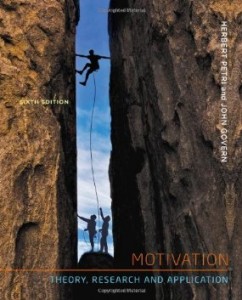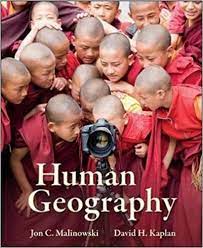Description
Test Bank For Adult Development And Aging Biopsychosocial 5Th Ed By by Susan Krauss Whitbourne
Chapter 3 The Study of Adult Development and Aging: Research Methods
Lecture guidelines
This chapter is the third and final chapter that serves as a background for what is to follow in the rest of the course. Given that the topic is not one that is inherently of great interest to students, some imagination is required to keep students motivated. It is recommended that the instructor make ample use of charts and diagrams to provide explanations of the various research designs. Furthermore, examples of specific research studies can be inserted throughout the lecture on design to illustrate the advantages and disadvantages of particular methods.
Videos and films
As stated above, it is helpful to use some imagination in planning the research methods lecture because the material is not of strong inherent interest to students. Suggested videos would include recent studies from the national news media using cross-sectional or longitudinal designs. A segment from “56 Up (http://www.pbs.org/pov/56up/#.UbedgPm1GCl) can be used to illustrate longitudinal research. “Neil” is a particularly interesting case.
Discussion questions:
Can you define independent and dependent variables? Think of examples from research and label the variables as independent and dependent.
Can you think of examples of an experimental study? Are studies on aging experimental or quasi-experimental?
Why is it that cohort, time of measurement, and age cannot truly be separated from each other?
Can you give some examples of cohort and time of measurement effects?
Prior to showing the box with disadvantages and advantages ask students to state what these might be.
Can you provide examples of cases where sequential designs would be important in the study of aging?
How would you interpret the age gradients for intellectual ability from the SLS?
Which designs seem to make more sense to you and would you use in conducting your own research?
Why do researchers maintain that it is not possible to draw cause-and-effect conclusions from correlational research?
What types of variables and problems are best studied through correlational methods?
What are the advantages to using multivariate designs in research on adult development and aging?
Is it truly possible to infer causal relationships from multivariate models? (This is a rather advanced question.)
How might an older adult feel when tested in a laboratory situation?
For what type of research questions would qualitative methods be particularly well-suited?
In what areas would archival research be of particular value? Why?
What types of special considerations might be needed in conducting surveys on older adults?
What can researchers do to reduce the subjectivity involved in a case report?
How could a focus group help a researcher begin to identify issues that can then be addressed in subsequent empirical studies?
If you were a consultant in a nursing home, how might you use observational methods to answer questions about the factors that affect the adjustment of residents?
Why is it necessary to establish the appropriateness of measures for different age groups of adults?
Why is it necessary to protect the rights of research subjects?
Under what sorts of conditions would it be necessary to keep subjects unaware of the purpose of the study until it had been completed? What steps should be followed in such conditions to ensure that subjects are protected?
How did HIPAA change the way that health information is used in research?
Multiple choice questions
Aging Today
- Method of Research used in NSHAP
Difficulty: Hard
Correct choice: B
Which research method was used in the NSHAP study on aging and sexuality in which older adults reported on their sexual experiences?
- Focus groups.
- Interviews.
- Case studies.
- Daily diaries.
Variables in developmental research
- Independent variable example- stem
Difficulty: Hard
Correct choice: A
Researchers studying the effects of videogame training on the cognitive abilities of older adults expose separate groups of male and female participants to a training condition and two other groups to a no-training condition in performance on a cognitive test. They then conduct a similar comparison involving male and female younger adults. In this study, the only true independent variable is:
- videogame training
- age group
- cognitive performance
- gender
- Dependent variable example- stem
Difficulty: Hard
Correct choice: B
A psychologist is conducting a study on the effect of intergenerational contact on happiness ratings, focusing on how such contact can be beneficial to older adults. . In one condition, she pairs an older adult with a young child and in the other she pairs two older adults with each other. Both sets of pairs meet for 30 minutes at a time. In this study, the dependent variable is the:
- pairings of young with old vs. old with old.
- happiness ratings of the older adults.
- length of time spent in contact.
- number of words each pair exchanges while they meet.
- Quasi-experimental design- choice
Difficulty: Easy
Correct choice: C
Because age cannot be an independent variable, research on aging uses a(n) ______________ type of design.
- true experimental
- bidirectional
- quasi-experimental
- semi-structured
- Cohort definition-stem
- Cohort definition- choice
Difficulty: Easy
Correct choice: A
Classifying groups of people studied in developmental research based on when they were born involves distinctions based on which type of categorization?
- cohort
- age
- sectional
- time of measurement
- Time of measurement effects- stem
Difficulty: Moderate
Correct choice: C
Developmental researchers who study time of measurement effects on psychological functioning are most interested in finding out:
- how people born at different years compare.
- the effect of aging on performance.
- how current social conditions affect scores.
- whether the least able drop out first.
- Cohort effect example- choice
Difficulty: Moderate
Correct choice: C
The fact that the “Greatest Generation” was raised in the 1930s, leading them to share certain sociocultural influences, is an example of which factor affecting developmental research results?
- time of measurement
- aging
- cohort
- mediation
- Age as an independent variable
Difficulty: Hard
Correct choice: C
Age cannot be used as an independent variable in developmental research because:
- People usually lie about their birthdate.
- There are no statistics to analyze age-based data.
- It cannot be manipulated by the experimenter.
- There are no good theories about aging.
Descriptive research designs
- Longitudinal example- choice
Difficulty: Moderate
Correct choice: B
A British documentary film maker followed a group of children every 7 years starting when they were 7 years old and continuing to track them down through age 56. This film comes closest to which type of developmental research design?
- Cross-sectional
- Longitudinal
- Cross-sequential
- Time-sequential
- Prospective study- stem
Difficulty: Moderate
Correct choice: B
In a prospective study of development, researchers use which type of approach?
- Compare people at one time who did and did not experience a major life transition.
- Track participants before and after they experience a major life transition.
- Ask participants to recall what they were like when they were younger.
- Interview close friends and relatives of participants over several time points.
- Prospective study example- choice
Difficulty: Moderate
Correct choice: B
A researcher studying retirement is concerned that most of the available data come from people who are already retired, instead of following people up through the transition. The best approach to counter this problem would involve which type of research design?
- cross-sectional
- prospective
- sequential
- archival
- Selective attrition- stem
Difficulty: Moderate
Correct choice: A
Although always a problem in research on aging, the issue of selective attrition most clearly affects what type of study?
- Longitudinal
- Sequential
- Laboratory
- Observational
- Terminal drop- choice
Difficulty: Easy
Correct choice: A
The gradual loss of cognitive abilities as individuals get closer to death is referred to in research terms as:
- terminal drop.
- unreliability.
- mortality control.
- correlational fallout.
- Selective attrition- stem
Difficulty:
Correct choice: D
Selective attrition typically involves the people initially most ______________ dropping out of a longitudinal study earliest.
- motivated
- infirmed
- active
- capable
- Selective attrition – choice
Difficulty: Easy
Correct choice: C
When the unhealthy members of a sample die out, the scores of the survivors seem to “rise” even though they may not change in reality. This research problem in studies on aging is referred to as:
- sequential growth.
- time of testing.
- selective attrition.
- qualitative analysis.





Be the first to review “Test Bank For Adult Development And Aging Biopsychosocial 5Th Ed By by Susan Krauss Whitbourne”